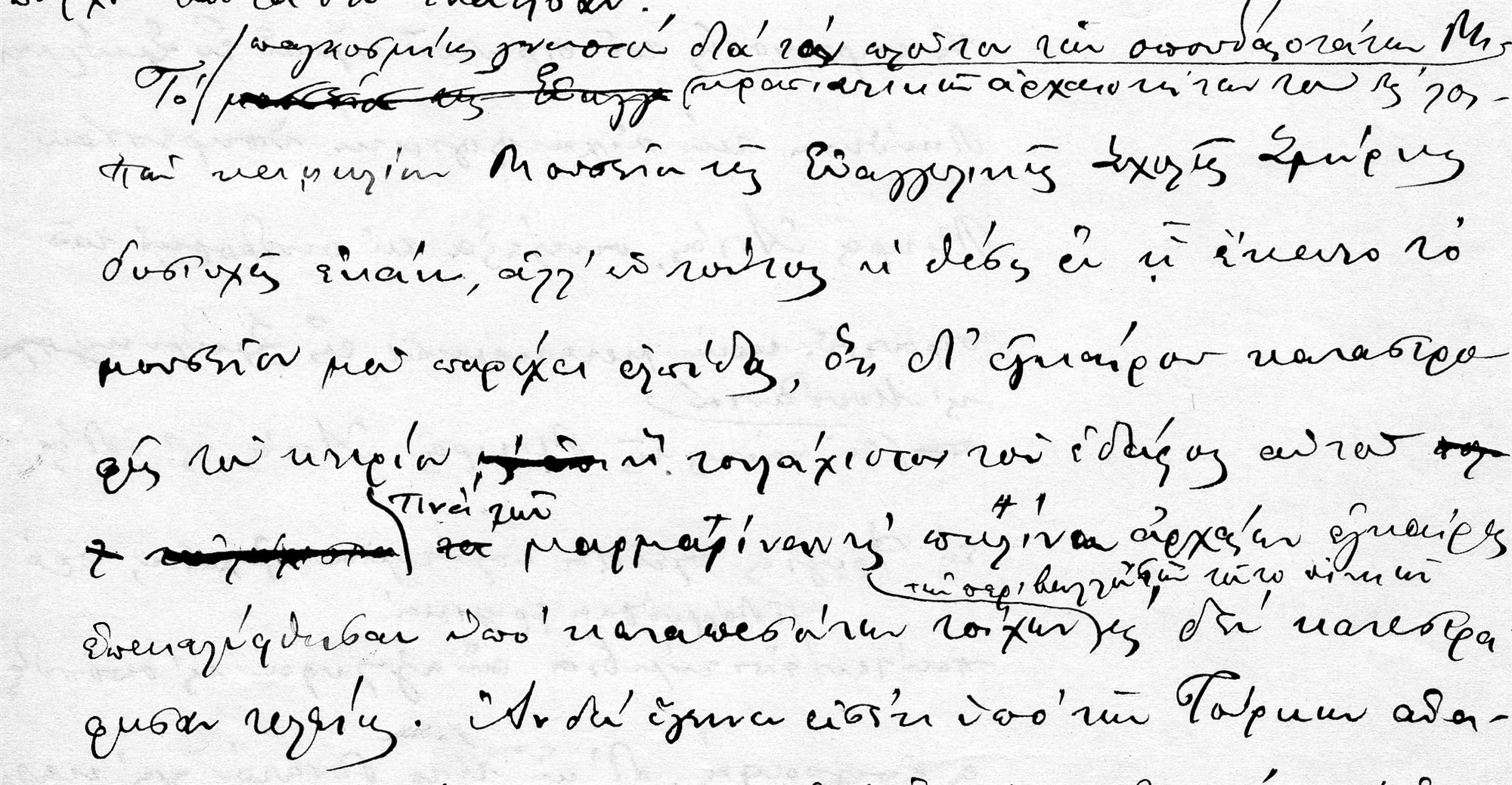
As you know, archaeological museums all over the world must have large … warehouses. This is due to the fact that only a small part of the many objects stored in them usually finds a place in the windows that the public sees; the rest, perhaps not as impressive or unique, are of value mainly to the scientists who study them. However, this does not mean that they do not carry exciting, often dramatic stories behind them. The marble head of a child, delivered in August 1926 to the National Archaeological Museum, showed signs of severe suffering. The “skin” of the marble was badly burned, the once-lustrous crystals turned into plaster in places, and the cracks in it testified to ill-treatment. It was a gift from the British military attache in Athens, who said it came “from the ashes of Smyrna”. The then director of the museum, Panagiotis Kastriotis, wrote a letter of thanks to the British Embassy, promising that the head would be displayed properly.
“Ninety-six years have passed, but we are finally ready to keep this old promise,” Dr. Kostas Pashalidis tells me by phone, who these days is preparing the corresponding excursions – the first one will take place today at 13:00 – which are part of the Invisible Museum program . This year, a series of exhibits coming from the EAM warehouses is dedicated to the Catastrophe in Asia Minor, and he, together with the curator Dr. Chrysanti Zuli, will undertake to convey to visitors not only the technical characteristics of the object or its (doubtful) date, but mainly its symbolic charge.

Evangelical School
“The head was an exhibit of the Museum of the Evangelical School of Smyrna, which burned to the ground along with the city. Its dating is indeed somewhat problematic; we all agree that it imitates the Hellenistic model and, in our own estimation, was created during the time of the Roman Empire. But what personally touches me the most is that this particular work depicts violence and sacrifice. We call the statue of a child that Konstantinos Kourouniotis brought with him from Nisa “a refugee”, but it is a rescued child. This one is a sacrifice. It bears traces of arson and violence and represents all the children that the Red Cross has been looking for for decades,” says Mr. Paschalidis. However, the guided tour, in addition to the chapter that now occupies a central place in the heart of the museum, will also tell about the work of Greek archaeologists who arrived in the Smyrna region in 1919 with the mission of creating the Department of Antiquities practically from scratch. Georgios P. Oikonomos was appointed as the first head of the department, who was then succeeded by Kourouniotis. The service carried out excavations at Klazomen, Nisa and the wider area of Smyrna. The economist brought with him to Greece to study about 100 clay fragments (shells), which were the only finds brought at that time from Asia Minor.
Integration
Despite all this, as Mr. Paschalidis informs us, there is still an accusation against Greece of colonial tactics during the three years of the High Commission’s stay in Smyrna. “The truth is that the Greek state, despite the demands of the war, financed archaeological activities in large sums. Within three years, an archaeological library was established in Smyrna, and with the permission of the High Commissioner Stergiadis, foreign archaeological schools are returning to the area. More generally, examination of the records shows that there was an investment rather than a takeover. According to colonial tactics, no antiquities were transferred to the capital. On the contrary, there was a logic of integration, something like what, for example, the Italians did in the Dodecanese.”
Source: Kathimerini
James Springer is a renowned author and opinion writer, known for his bold and thought-provoking articles on a wide range of topics. He currently works as a writer at 247 news reel, where he uses his unique voice and sharp wit to offer fresh perspectives on current events. His articles are widely read and shared and has earned him a reputation as a talented and insightful writer.